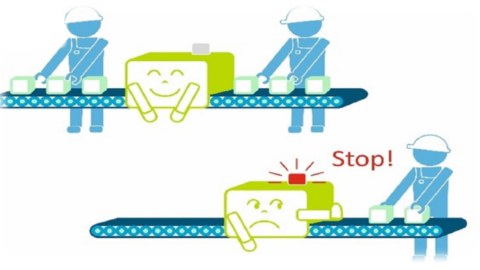In a production process, the appearance of technical defects, defects leading to defective products is inevitable. Except for human errors, there are many other causes that can lead to errors such as: Inconsistent standards or procedures; Machines are not regularly maintained; Unsuitable materials; Tools are worn… However, errors caused by subjective causes from humans are often much more difficult to predict.
The goal of the ZQC technique is to be absolutely error free! Your organization therefore needs to put in place the mandatory conditions for quality control at all stages of the process, especially at stages involving human participation.
Shingeo Shingo has classified human flaws as follows:
- Forgetting: We forget many details when we are not concentrating, such as locking the door with the inner key or the station manager forgetting to lower the gate across the street
- Misunderstandings: Mistakes happen when we make wrong conclusions, for example a person who is not used to a transmission car can automatically brake on the brake because it thinks it is a clutch.
- Misidentification: It is easy to get it wrong if we just glance at it or look from a distance, for example ₹ 500000 instead of ₹ 50000.
- Personal qualifications: New worker not know how to operate or just familiar with a certain process
- Deliberately skipping the process: When we decide that we can bypass rules under certain conditions, for example, crossing the street at a red light because there are no vehicles in view
- Accidentally skipping the procedure: We neglect & make mistakes without knowing how it happened, for example someone is in deep thought trying to cross the street without even noticing a red light
- Sluggishness: Mistakes occur when our actions are delayed by a delay in judgment, for example a learner riding the brake pedal slowly.
- No standard framework: When there are no suitable work instructions or standards, e.g. measurement can be left to individual workers to decide.
- Unexpected error: When the machine operates differently than expected, for example, the machine may malfunction without warning.
- Intentional error: Deliberate mistake leads to vandalism
As can be seen, the definition of error by Shigeo Shingo seems to be broader than the usual criterion. He also emphasized that intentional mistakes can have far more serious consequences than unintentional ones, as they are often repeated over and over until discovered. Shingo has defined the following:
- Error: Performing a prohibited action, failing to correctly perform a requested action, or misinterpreting information required to correctly perform an action
- Error prevention: The use of well-defined process features to prevent the creation of nonconforming products. Shingo distinguishes between error and disability by a relationship of cause and effect.
In the next section, we will continue to learn about how errors are solved through ZQC techniques.
Productivity and Quality Office
